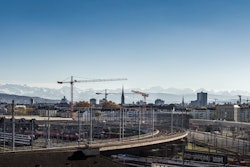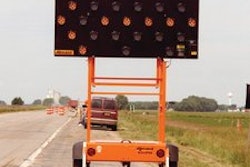When Franklin D. Roosevelt assumed the presidency in 1933, he was faced with the worst economic crisis in our country's history. Recognizing the need for quick action, he set his "New Deal" in place within months of taking office. The period that followed saw the creation of hundreds of thousands of jobs and the start of an ongoing legacy of infrastructure investment as a means for economic stimulus and growth.
Today, investment in infrastructure is again perceived by many as the most practical means to pull the U.S. economy out of its steepest downturn in decades. Yet, recent efforts to push through a new economic stimulus package, with the infrastructure as a focal point, have met resistance. A $61 billion stimulus bill passed by the House in late September fell flat in the face of a threatened presidential veto; subsequent efforts to promote similar legislation during the lame-duck Congressional session were stymied.
Opponents - most notably, the Bush administration - argue that infrastructure investment cannot provide the short-term "shot in the arm" the economy requires. According to President Bush, infrastructure projects require "lengthy time periods to plan and build and would not create a substantial number of jobs in the near future."
This argument is decidedly short sighted and fundamentally incorrect. For one, the American Association of State Highway and Transportation Officials has already identified more than 3,000 highway projects, totaling about $18 billion, that could be implemented within 30 to 90 days. Further, the National Association of Clean Water Agencies has identified $3 billion in "ready to go" sewer projects, with an estimated $10 billion in similar projects nationwide.
And, unlike taxpayer "rebates," infrastructure development has the potential to provide far more substantial and long-term benefits. According to Toby Mack, president and CEO, Associated Equipment Distributors, "Infrastructure would immediately create jobs and spark new business purchasing, while at the same time laying a solid physical foundation for America's long-term economic vitality." This includes taking steps to help alleviate highway congestion - which costs the U.S. economy an estimated $78 billion annually - as well as hundreds of billions of dollars in water infrastructure needs.
What's more, the American public clearly supports ongoing infrastructure investment. In last month's elections, voters approved 86% (over $71 billion worth) of state and local transportation funding-related ballot initiatives in 17 states. In 2006, 77% of such ballot initiatives (worth $40+ billion) were approved; and in 2004, 78% percent of such initiatives passed. (Source: American Road & Transportation Builders Association)
Yet, opposition to infrastructure funding remains, deadlocking the current Congress and making passage of a new stimulus package unlikely prior to year's end. While the incoming administration and Congressional majority have expressed more favorable support, there's still a tough battle ahead. Thus, it's crucial for all those affected - contractors and consumers alike - to keep pressure on legislators to ensure their "expressed support" ultimately leads to tangible results.

















